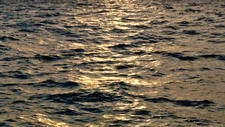Tides

TEKS Objective
The student is expected demonstrate that Earth rotates on its axis once approximately every 24 hours causing the day/night cycle and the apparent movemont of the Sun across the sky.
Essential Understanding
The student knows that there are recognizable patterns in the natural world and among the Sun, Earth and Moon system.
Science Background
What Causes the Tides?: NOVA – PBS (website) - In this animated interactive, see how the motion of the Earth creates inertial forces that combine with the gravity of the moon and sun to produce ocean tides on our planet.
What Causes the Tides?
NOVA – PBS, http://www.pbs.org/wgbh/nova/earth/
Tides and Water Levels: National Oceanic and Atmospheric Administration (website) - Explains how the moon’s gravitational pull contributes to Earth’s tides and planetary bulges. Includes video and podcasts.
Tides and Water Levels
National Oceanic and Atmospheric Administration (NOAA)
Tides and Currents Education: National Oceanic and Atmospheric Administration (website) - Tides are one of the most reliable phenomena in the world. This collection of short essays describes and explains Earth’s tides, the forces that cause them, and why it is important to understand how they work.
Tides and Currents Education
National Oceanic and Atmospheric Administration (NOAA)
Tides: McGraw Hill (video) – Short animation that illustrates how the pull of gravity results in the tides.
What Causes the Tides?
McGraw Hill, http://highered.mcgraw-hill.com
Signature Lesson
Gravity and Tides: Nature Bridge (website) - Students participate in class discussion and conduct a rubber band activity to understand how the gravitational pull of the moon and Sun, along with differential gravitational forces, affect the oceans’ movements.
Gravity and Tides
Nature Bridge, http://www.naturebridge.org/
- Supporting Lessons
- Extensions
- Assessment Ideas
- Literature Connections
- Related
TEKS - Additional Resources
Supporting Lessons
What Causes Tides? Explorer Education Program (PDF) - This activity follows the first signature lesson. Students make observations related to Earth’s gravity, collect and analyze data, and identify the role of gravity and inertia impact global tide patterns.
What Causes Tides?
Explorer Education Program, http://www.marine.ie/
Tide Watch: Harvard-Smithsonian Center for Astrophysics (website) - Scroll down to the final activity (6.6), in which students track and record newspaper reports of local tidal patterns for one month, observe moon phases over the same time period, and create a small poster that matches these two sets of data in text and drawing.
Tide Watch
Harvard-Smithsonian Center for Astrophysics, http://hea-www.harvard.edu/
Waves and Tides: Alaska’s Seas and Rivers Curriculum (website) - During this 7-10 day investigation, students develop an understanding of the causes, properties and patterns of waves and tides through discussion, demonstration, and hands-on activity. (This lesson was originally developed for 7th grade, and will need some modification for use with 4th grade students.)
Waves and Tides
Alaska’s Seas and Rivers Curriculum, http://seagrant.uaf.edu/
Tide Types: CIECE (website) - Students will be able to describe some of the causes of the different types of tides.
Tide Types
CIECE, http://www.k12science.org/
Tides: Padilla Bay (PDF) - Tides occur in cycles that can be predicted by studying their patterns.
Tides
Padilla Bay, http://www.padillabay.gov/
Tides, High and Low: Crayola (website) - Explore how gravity and the moon affect tides. Find out how tides are useful to man.
Tides, High and Low
Crayola, http://www.crayola.com/lesson-plans/
Why Do Different Ties Occur?: Bright Hub (website) - Here is an introductory guide for novice teachers on how to preparing fourth grade lesson plans for introducing the concept "why do different tides occur "?
Elaboration Lessons and Extensions
Tides, Where Does All the Water Go?: Explorers Education Program (PDF) - Research project in which students collect and analyze data to identify tidal patterns and features, understand the causes and impacts of tides on plants, animals and people.
Tides, Where Does All the Water Go?
Explorers Education Program, http://www.marine.ie/
Time Lapse Video: National Geographic (video) - Use this time lapse video from National Geographic for students to analyze as part of the Signature lesson on tides.
Time Lapse Video
National Geographic, http://ngm.nationalgeographic.com/
Earth Tides and Volcano Monitoring: US Geological Survey (Website) - Explains the relationship between Earth tides (as opposed to ocean tides) and volcanic activity and research.
Earth Tides and Volcano Monitoring
US Geological Survey, http://hvo.wr.usgs.gov/volcanowatch/
Assessment Ideas
Using pictures and text, have your students draw a conclusion about the relationship between the height of the drop point and the depth of the crater.
Literature Connections
The Moon, Simon, S., ISDN: 978-0689835636
Earth and Moon, Kerrod, Robin, ISBN: 1-929-29864-1
Footprints On the Moon, Siy, Alexandra, ISBN: 978-1570914089
Man On the Moon, Suen, Anastasia, ISBN: 0-140-56598-1
Moon, Meachen-Rau, Dana, ISBN: 0-756-50438-4
The Moon, Winrich, Ralph, ISBN: 978-1-4296-0725-4
What the Moon Is Like, Branley, Franklyn, ISBN: 0-064-45185-2
Additional Resources
The Spirit of Discovery – Moon: NASA (website) – Activities, lessons, and other resources.
The Spirit of Discovery – Moon
NASA, http://www2.semo.edu/
NASA Photojournal: NASA: (Website) – Huge collection of downloadable high-resolution images of the Moon and the planets.
NASA Photojournal
NASA, http://photojournal.jpl.nasa.gov/
Comparison - Earth's Moon vs. Earth: NASA (website) - Use this NASA resource to compare characteristics of the Earth and Moon.
Comparison - Earth's Moon vs. Earth
NASA, http://photojournal.jpl.nasa.gov/
TEKS Navigation
Grade 5
Need Assistance?
If you need help or have a question please use the links below to help resolve your problem.

Comments